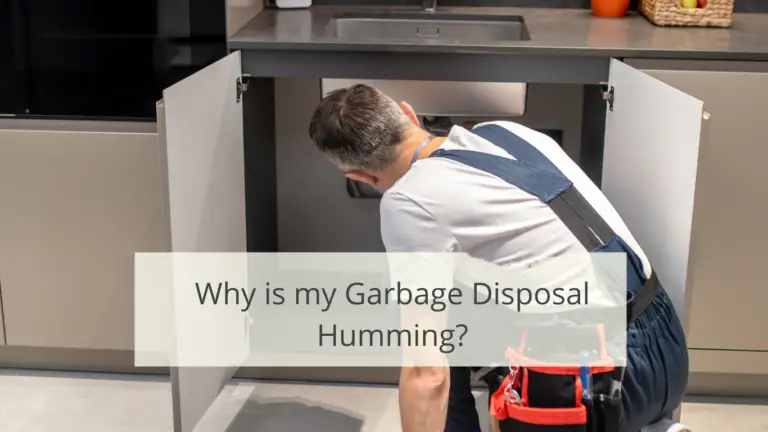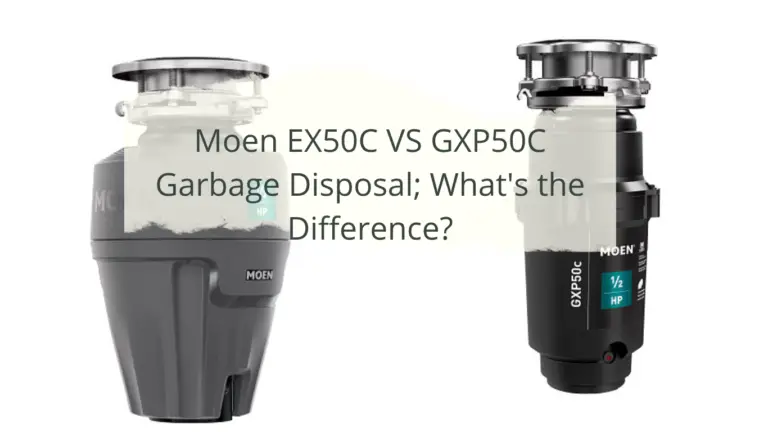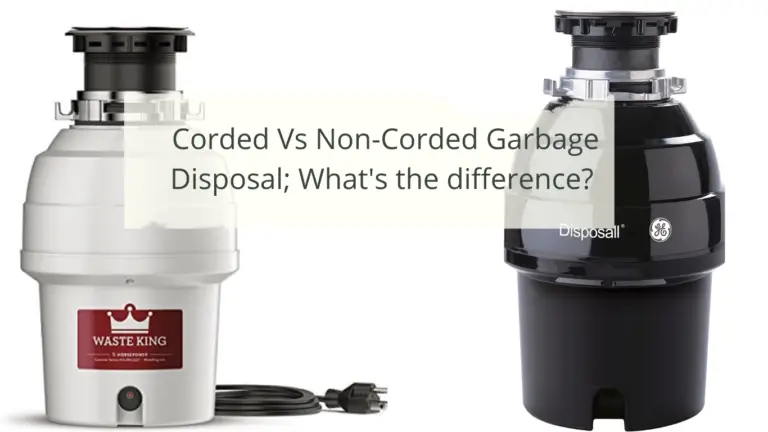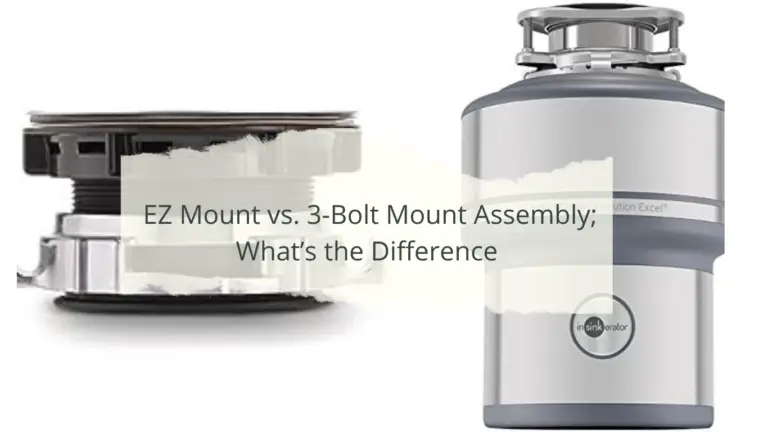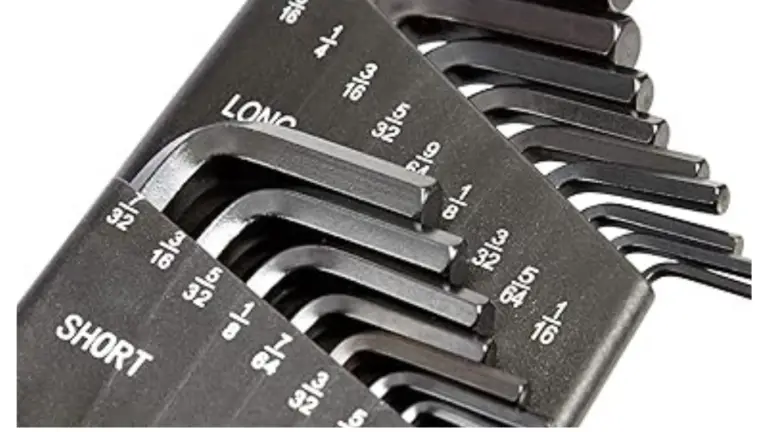How does a garbage disposal work?
This post may contain affiliate links which means I may receive a commission for purchases made through links.
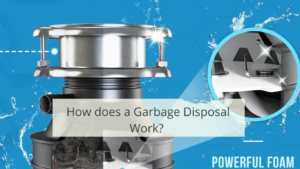
Nowadays, the design of many kitchen sinks includes a garbage disposal between the P-trap and the drain basin. Thanks to its ability to make life and meal clean-up easier. Surprisingly, despite using their garbage disposal almost every day, most homeowners do not know how these kitchen appliances work.
As a result, it becomes very difficult to fix or repair your garbage disposal when it stops working. However, understanding how these units work will help you make common repairs, troubleshoot problems, and guide you when using your garbage disposal.
Luckily, this article has everything you need to know about how garbage disposals work. But first, let’s look at what garbage disposal is and its history!
What is a garbage disposal?
Also known as a garburator or waste disposal unit, a garbage disposal is an electrically powered appliance/ grinder that is located under the kitchen sink between the P-trap and the sink’s drain. The device cuts food waste into tiny pieces, allowing them to effectively and safely pass through the plumbing system. Another benefit of shredding food waste into tiny pieces is that it allows for quicker biodegradation. In addition, some city waste systems have wastewater treatment plants that turn waste food into fertilizer or use it as an energy source.
Most people think that garbage disposal units have sharp blades that chop up food waste. However, that is not how these units work, but more on that later. In the meantime, while these units are designed to remove food waste, they can only handle small bits of food. For that reason, it is important to be careful of what goes down your garbage disposal to prevent it from clogging.
A Brief History of Garbage Disposal Units
The garbage disposal was invented by an architect known as John W. Hammes in 1927. He patented the unit under InsinkErator in 1935 and released the first disposal to the market in 1940. While General Electric has tried to dispute John’s claim, insisting that they invented the unit in 1935, he still holds the 1st patent and the InsinkErator brand still dominates the garbage disposal market to date.
In essence, the unit was installed in the sink’s drain where it took food waste, ground it up, and released it into the waste line. More than 9 decades later, the design of the garbage disposal unit has remained fairly consistent. Moreover, its popularity has relatively increased as it has become a required appliance in almost every kitchen. However, that was not always the case!
In the 1930s and 40s, the municipal sewage systems in most cities across the country have regulations prohibiting draining garbage (food waste) into the system. Luckily, the invention of the InSinkErator garbage disposal was highly successful in convincing most localities to lift these prohibitions.
Nonetheless, some localities in the USA including New York City still prohibited the use of garbage disposal units for several years. On the bright side, the regulation prohibiting the use of garbage disposals in New York City was rescinded in 1997 after a study conducted by the NYC Environmental Protection Department.
How do Garbage Disposals work?
A garbage disposal is powered by electricity through a small motor (usually 1HP or less). The motor rotates a blade to quickly chop anything you put into the unit’s grinding chamber. However, there is more that goes into how the disposal works when you flip that magic switch.
To get a better understanding of what exactly goes on in your sink drain, we’ll look at the different parts of the garbage disposal. That way, you’ll get a good idea of how various components of a garbage disposal work together to grind up food waste into a drain-safe slurry!
-
Splash guard
If you look at your garbage disposal, the first thing you’ll see is the splash guard, which is the rubber flap around the sides. As the name implies, a splash guard prevents crushed food and water from splashing back up into the sink basin. Moreover, it’s the place where you put food waste into the garbage disposal.
-
Hopper Chamber
A hopper chamber refers to the hollow cylinder under the sink that houses all the parts of a garbage disposal.
The garbage disposal works using 2 chambers; the lower and upper chambers. The upper chamber holds the food waste when it’s first collected. While the lower chamber is insulated and has a motor that chops up the food waste.
So, when you turn on your garbage disposal, the food waste will move from the upper to the lower chamber, where it will get chopped up. Afterward, the chopped food will exit the garbage disposal unit through the waste/drain pipe.
-
Flywheel & shredder ring
A shredder ring is located in the middle of the waste disposal unit between the upper and the lower hopper chambers. On the other hand, the flywheel refers to a spinning metal turntable located under the shredder ring. The flywheel catches food waste in the disposal unit to prevent it from entering the lower chamber until it is small enough to pass through through the holes on the sides of the shredder ring.
Once you turn on the disposal unit, the inside walls of the shredder ring are coated with narrow, sharp groves that crush food against the flywheel to break it down into small bits. In the meantime, the flywheel’s rotation is supported by the insulated motor located at the bottom of the waste disposal.
-
Motor and Impellers
Every garbage disposal has a motor that usually generates about ½ to ¾ HP worth of force. That way, when you turn on the garbage disposal, the motor will rotate the impellers and flywheel attached to it at a speed of up to 2000 RPM.
On the other hand, impellers are the blade of a garbage disposer. However, unlike the typical blades, impellers are not sharp like a knife. Instead, impellers have 2 lugs that spin in unison mounted on a steel plate.
The motor causes the impellers to spin along with the flywheel, generating a force that shreds food waste against the grooves of the shredder ring. This motion breaks the food chunks into pieces that are small enough to pass through the drain pipe.
-
Waste Line connector
After the food waste is crushed into manageable chunks, it goes through the waste line connector in the lower hopper chamber. The waste line connector is the last part of the garbage disposal that food waste goes through before entering the plumbing system. In short, the water flowing down the lower hopper moves the food pieces into the waste line connector, down the P-trap, and out to the home’s septic tank or water treatment plant.
How to properly use a garbage disposal
Although all garbage disposal models vary slightly, users have to initiate the chopping by flipping the switch next to the sink, usually above the counter. In addition, the unit has a stopper switch and a reset button on the grinding chamber, beneath the kitchen sink.
To get the most out of your garbage disposal unit;
- Always run cold/ room temperature water when using the device
- Turn the garbage disposal on before allowing food waste into the grinding chamber
- Slowly feed the food waste into the unit
- Let the cold water run for a few seconds after turning off the unit
- Clean the disposal regularly
- Unplug the unit from the wall outlet before doing any maintenance work
Conclusion
To sum up, a garbage disposal unit does not chop up food. Instead, a garbage disposal works by creating a force that shreds food waste into smaller pieces through pressure and quick speeds. More importantly, all the components of a garbage disposal work together to get this job done. However, it’s important to use and maintain your unit properly to prevent it from breaking or getting clogged.


